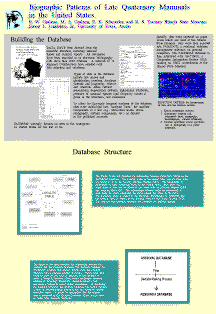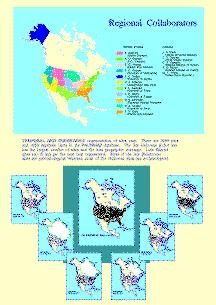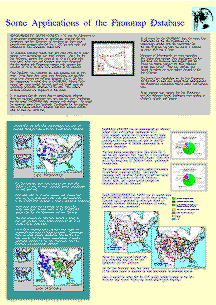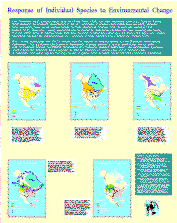Biogeographic Patterns of Late Quaternary Mammals in the United States.
Poster presented at the:
54th annual meeting of
the Society of Vertebrate Paleontology, Seattle, Washington.
Oct 19-22, 1994;
1995 Midwest/Great Lakes ARC/INFO User Conference, Champaign, Illinois.
R. W. Graham, M. A. Graham, E. K. Schroeder, and R. S. Toomey --
Illinois State Museum, Springfield
Ernest L. Lundelius, Jr., University of Texas, Austin




Abstract
FAUNMAP, an electronic database for the late Quaternary distribution of
mammal species in the United States, has been used to assess evolution of
mammalian communities in fluctuating environments. Maps illustrating changes
in distributions of individual species document an individualistic response
with species migrating in different directions, at different rates, and at
different times. Low frequencies (<15%) of species pairs that are positively
associated in both late Pleistocene and late Holocene faunas also support
an individualistic hypothesis and refute the contention of tightly linked and
highly coevolved species associations. TWINSPAN clustering scores plotted
on a map of the United States reveal temporal biogeographic patterns.
Geographic differentiation in the U.S. is similar for both the late Pleistocene
and late Holocene, but the species composition of biogeographic regions differs
for these two time periods. Finally, Dice similarity coefficients decrease
with geographic distance of comparisons for both late Pleistocene and late
Holocene, but for distances up to 1600 km, late Pleistocene values are always
significantly lower than those of the late Holocene. This suggests that the
late Pleistocene was more heterogeneous.
eks
© Illinois State Museum --
Last updated 04-Sep-96 by Erich Schroeder



